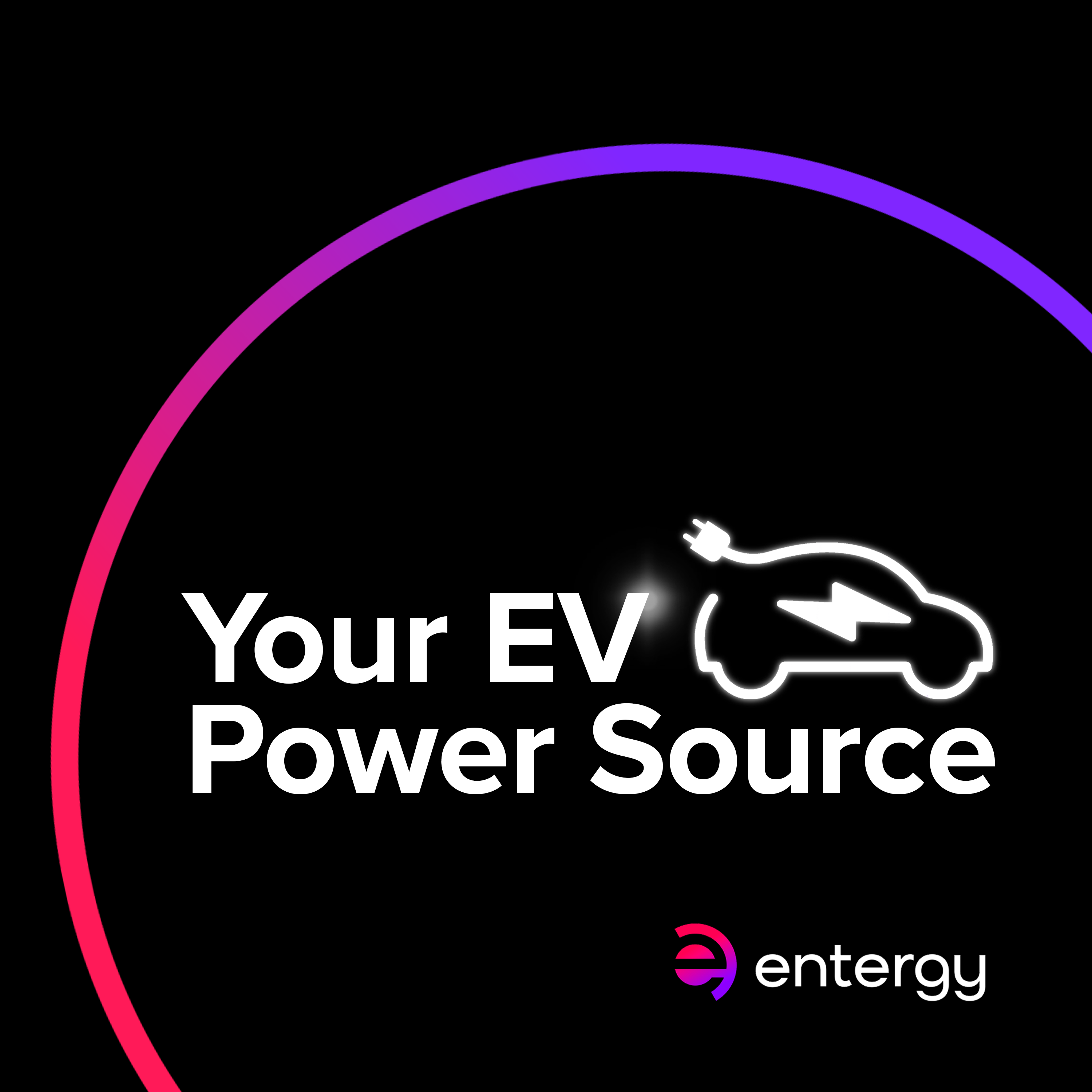EV myth: “There's nowhere to charge your EV”
May 14, 2024

In this episode of Your EV Power Source podcast, hosts Scott Barrios and Amy Flower are joined by Jeffrey Cantin, owner and president of Solar Alternatives, to debunk the concern that there's nowhere to charge your EV. They discuss how to plan long road trips with an EV, the advancements in EV charging infrastructure, and how the National Electric Vehicle Infrastructure (NEVI) Program is powering up America's EV future.
In this episode of Your EV Power Source podcast, hosts Scott Barrios and Amy Flower are joined by Jeffrey Cantin, Owner and President of Solar Alternatives, to debunk the concern that there's nowhere to charge your EV. They discuss how to plan long road trips with an EV, the advancements in EV charging infrastructure, and how the National Electric Vehicle Infrastructure (NEVI) Program is powering up America's EV future.
Mentioned in this episode:
Incentives for EV charging infrastructure for Entergy customers https://entergyetech.com/electric-vehicles/
Incentives for EV charging infrastructure for Entergy customers https://entergyetech.com/electric-vehicles/
Electrify America charger locator
ChargePoint charger locator map
ChargePoint app
National Electric Vehicle Infrastructure (NEVI) Formula Program
National Alternative Fuels Corridors information
Connect with EV owners and test drive an EV in your area at a local Drive Electric event
Connect with other EV owners and enthusiasts:
Mississippi Facebook EV group – EV Mississippi
Louisiana Facebook EV page – Drive Electric Louisiana
Louisiana Facebook EV group – Louisiana Electric and Hybrid Vehicle Alliance
Louisiana Facebook EV group – Northshore EV Club
Louisiana Facebook EV group – Tesla Louisiana - Owners and Enthusiasts
Arkansas Facebook EV group – AR EV Owners
Arkansas Facebook EV group – Arkansas EV Club
Connect with the guest:
Jeffrey Cantin on LinkedIn
Solar Alternatives Website
Considering switching to electric:
Calculate savings, find chargers near you and learn about more resources to help make switching to electric easy at https://emobility.entergy.com/
Important sections of the conversation:
Time stamps here
If you enjoyed this episode, make sure to subscribe, rate and review on Apple Podcasts, Spotify and Google Podcasts, Here's a guide on how to do this.
Episode Highlights:
- [02:50] - Embarking on long road trips with an EV requires some preparation, similar to planning your day around your cell phone's battery life. However, special apps allow you to locate charging stations and understand your vehicle's energy consumption, directing you to the nearest charger, as well as advice on optimal driving speeds and charging levels to enhance efficiency, ensuring you never run out of power. Regular charging habits, like plugging in at home or work, become your second nature, offering a sense of confidence on the road.
- [10:10] - Fast chargers are a go-to for long trips, costing around $10 to $15 to "fill up." With apps to guide you to nearby chargers, the cost remains lower than gasoline, sometimes even free. Reliability is generally high, thanks to maintenance by retailers and public entities, ensuring chargers are operational even during cross-country adventures. More importantly, accessibility has improved, with networks like Electrify America and ChargePoint providing well-spaced charging options, reducing range anxiety, and making EV travel more seamless and affordable.
- [14:08] - EV charging technology is rapidly evolving, bringing exciting advancements that promise more convenience and integration into our smart homes and grids. Chargers are becoming faster, ensuring even large vehicles with big batteries can be charged quickly at home or work. Moreover, introducing smart chargers allows for remote monitoring through apps, alerting users to any issues and integrating with smart home systems for efficient energy use. Upcoming chargers will support bidirectional charging, enabling your vehicle to supply power back to your home during outages. Additionally, innovative programs are encouraging users to charge during off-peak hours, supporting grid stability, and offering incentives for participating.
- [20:14] - The National Electric Vehicle Initiative (NEVI) Program, designed to significantly expand America's fast-charging infrastructure, aims to ameliorate the "where can I charge" concern by installing a vast network of fast chargers along interstate corridors and within communities over the next five years. By addressing the chicken-and-egg dilemma of needing more chargers to encourage EV purchases and vice versa, NEVI facilitates a partnership between federal and state efforts, alongside businesses, to ensure accessible charging options almost as omnipresent as gas stations. This supports existing networks like Tesla and Electrify America but also invites businesses of all kinds to join the movement toward a greener, more connected future.
Your EV Power Source is handcrafted by our friends over at: [email protected]